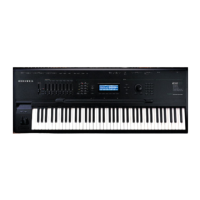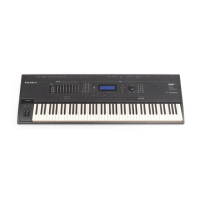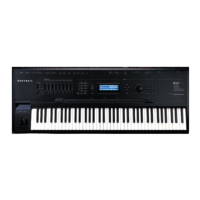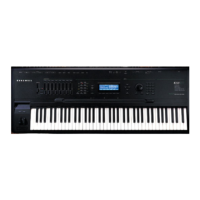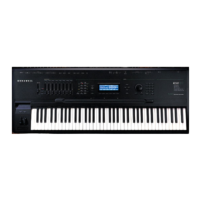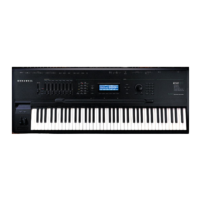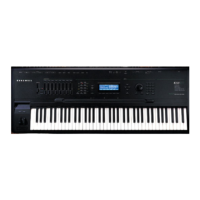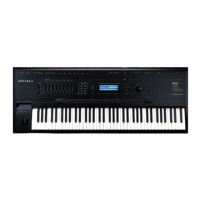DSP Functions
Added Waveforms
14-38
Added Waveforms
SINE+
SAW+
NOISE+
There are three DSP functions that add waveforms to a layer’s existing sample: SINE+, SAW+,
and NOISE+.
The parameters on the control input page for the SINE+ function affect the pitch of the sine
waveform without affecting the pitch of the existing sample. The control input page for the
SINE+ function is similar to those for the regular waveforms above. There are parameters for
coarse adjust, key tracking, velocity tracking, Source 1 and Source 2, and a pad. There are also
parameters for fine adjust and fine Hertz adjust.
The SAW+ function is virtually identical to the SINE+ function; the only difference is in the
shape of the waveform.
The NOISE+ function is tied to the level of the sample to which it’s added. It will generate fairly
white noise (that is, nearly equal amplitude at all audible frequencies) as long as the amplitude
of the sample is non-zero. The amplitude of the noise is multiplied by its gain control (the
Adjust parameter on its control input page), then added to the signal. To add a short burst of
noise at the beginning of a sound, assign ENV2 as the value of one of the Source parameters,
then edit ENV2 to produce an envelope with a rapid decay.
The control parameters for NOISE+ are similar to those for SINE+ and SAW+, except that there
are no parameters for fine adjust or fine Hertz adjust.
Non-linear Functions
HIGH FREQUENCY STIMULATOR
DISTORTION
SHAPER
DOUBLE SHAPER
TWO-PARAMETER SHAPER
WRAP
LOWPASS FILTER WITH CLIPPING
PULSE WIDTH MODULATION
The functions in this category have a variety of effects on the signal. What they have in
common is that they can add partials to the signal that were not present at their inputs.
The non-linear functions can produce dramatic changes in timbre, resulting in all sorts of new
and modified sounds. One thing to keep in mind is that sounds with a large number of high-
frequency partials can be subject to distortion at the high end of the keyboard, especially when
you’re using more than one of the non-linear DSP functions. You might also hear a bit of
aliasing with some sounds. Aliasing refers to unintended partials that occur below the
fundamental pitch of a sound. The easiest way to remove this distortion or aliasing is to reduce
the level of the Adjust parameter on the control input page for whichever non-linear DSP
functions you’re working with. When you’re using PWM followed by DIST or SHAPER, you’d
reduce the level of the Adjust parameter for the DIST or SHAPER function. You can also use
key tracking (KeyTrk, usually with a negative value), and key tracking in combination with the
Keytrack Start (KStart) parameter that’s described at the beginning of this chapter.
Even with the damping effects of KeyTrk and KStart, you may come up with sounds that are
fantastic in the low range, but gritty in the high range. You can transpose the keymap down to

